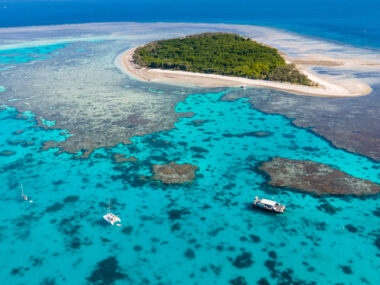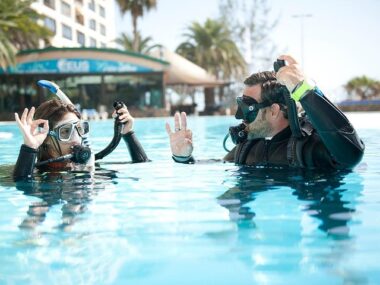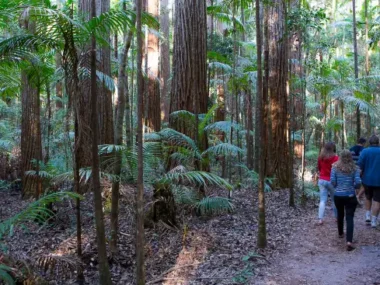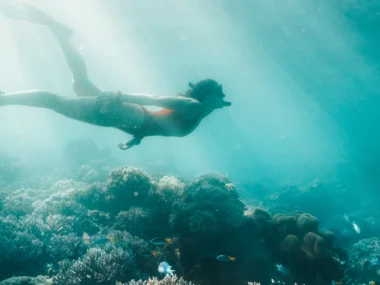Australia is known for its unique and diverse wildlife, but unfortunately, not all of it is friendly. In fact, some of the country’s most fascinating animals are also its most dangerous. From venomous snakes to massive crocodiles, Australia is home to a wide range of creatures that can be lethal to humans.
In this post, we’ll take a closer look at the 5 most dangerous animals in Australia and what makes them so deadly. Whether you’re planning a trip Down Under or simply have a fascination with the country’s wildlife, this is one post you won’t want to miss.
Saltwater Crocodile
The saltwater crocodile is the largest living reptile in the world and can be found in the northern parts of Australia. They can grow up to 23 feet in length and weigh over a tonne. Saltwater crocodiles are incredibly dangerous to humans, with a powerful bite and the ability to move quickly both on land and in water. Attacks on humans are rare, but when they do happen, they can be fatal. To avoid encountering a saltwater crocodile, it is important to heed warning signs in areas known to have crocodiles and to stay away from the water’s edge, particularly during the breeding season from September to April.
Box Jellyfish
The box jellyfish is a venomous marine creature that inhabits the waters of northern Australia. They have a bell-shaped body that can be up to 30 cm wide and are covered in tentacles that contain thousands of tiny, harpoon-like stingers. A sting from a box jellyfish can be extremely painful and, in some cases, fatal. To avoid encountering a box jellyfish, it is important to swim only in designated swimming areas and to wear protective clothing such as a stinger suit when swimming in areas known to have box jellyfish.
Eastern Brown Snake
The eastern brown snake is one of the most venomous snakes in the world and can be found throughout Australia, particularly in urban areas. They can grow up to 2 meters in length and have a slender body with a distinct, reddish-brown color. Eastern brown snakes are responsible for the majority of snake bite deaths in Australia, with their venom causing paralysis and even cardiac arrest in some cases. To avoid encountering an eastern brown snake, it is important to wear protective clothing such as boots and long pants when walking in areas known to have snakes and to keep a safe distance if one is encountered.
Funnel-Web Spider
The funnel-web spider is a venomous spider found in eastern Australia. They have a glossy, dark brown or black appearance and can grow up to 5 cm in length. Funnel-web spiders are known for their aggressive behavior and powerful bite, which can be fatal if left untreated. To avoid encountering a funnel-web spider, it is important to wear protective clothing such as gloves and long pants when gardening or working in areas known to have spiders and to seek medical attention immediately if bitten.
Blue-Ringed Octopus
The blue-ringed octopus is a small, venomous marine animal found in the waters around Australia. They have distinctive blue rings on their body and can be up to 20 cm in length. The venom from a blue-ringed octopus can cause paralysis and, in some cases, death. To avoid encountering a blue-ringed octopus, it is important to wear protective clothing such as gloves when handling rocks or other items in rock pools and to seek medical attention immediately if bitten. It is also important to note that a blue-ringed octopus can still be dangerous even if it appears dead, as their venom can remain active for some time after death.
Recommended Post:
- The 6 Best Country Towns to Live in Australia
- 7 free things to do in Adelaide
- Green Eats: The Top Vegetarian Restaurants in Melbourne
- The Best Shopping Spots in Melbourne
In conclusion, it’s important to recognize the potential dangers posed by Australia’s most dangerous animals. Saltwater crocodiles, box jellyfish, eastern brown snakes, funnel-web spiders, and blue-ringed octopuses are all capable of inflicting serious harm or even death. However, with proper precautions and respect for wildlife, it is possible to minimize the risks. Always pay attention to warning signs, avoid risky behavior, and be aware of your surroundings. By doing so, you can enjoy the beauty of Australia’s natural wonders while staying safe and protecting the animals that call this country home.






